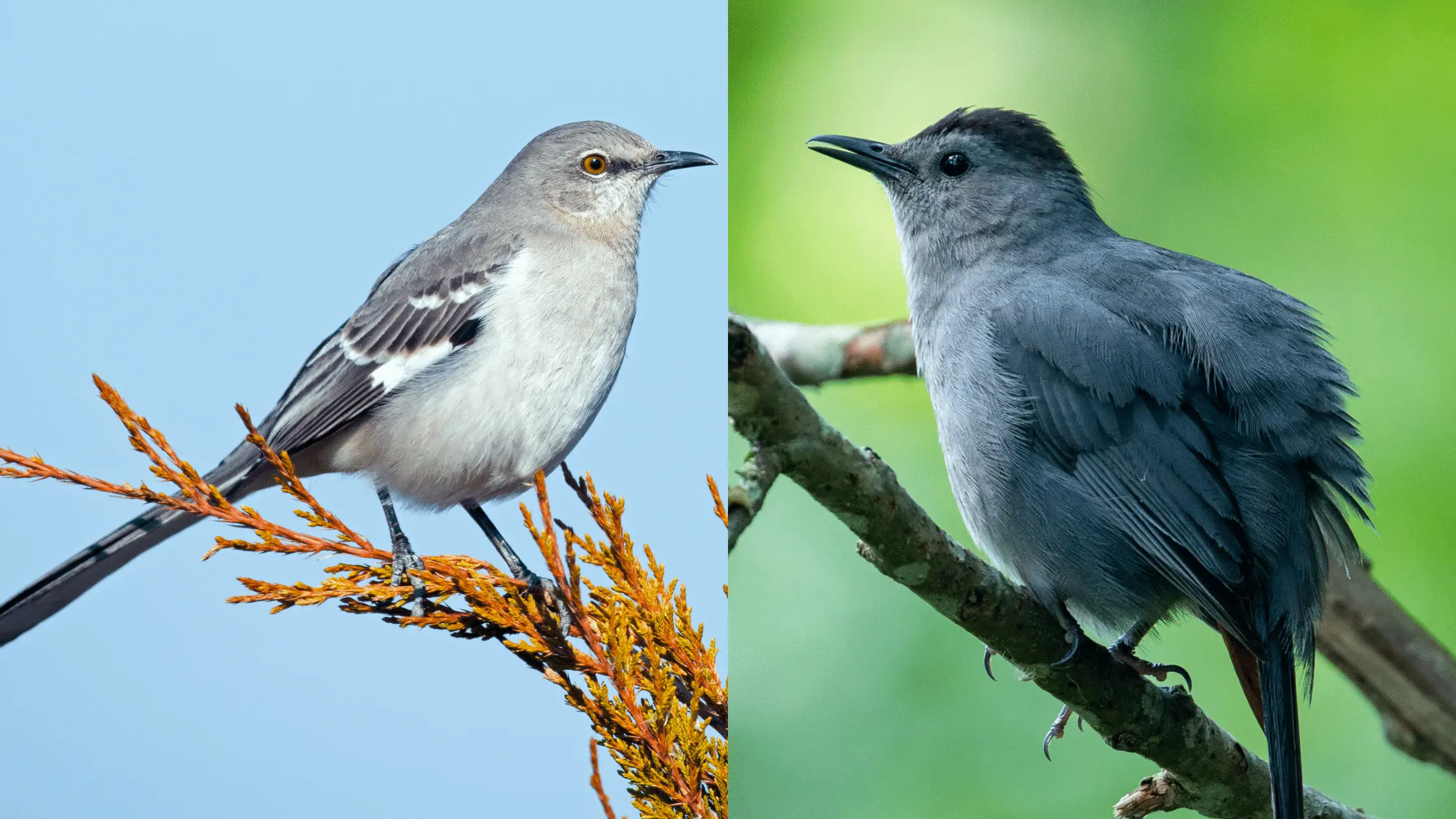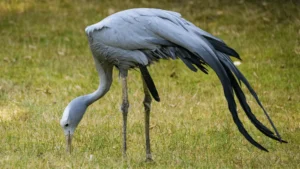Does a catbird sound like a cat? I know this is the question on your mind when you first heard the term “catbird.”To answer the question, yes, the most common call of a catbird is a raspy meow that sounds like a cat. The universe or God(depending on which you believe in) was in a playful mood when it created the catbird.
The catbird and the mockingbird are two beautiful songbirds that are pleasing to watch and listen to. While these two birds are similar in appearance, they are different in lifestyle, coloration, and structure. These differences are what we will discuss in the next few paragraphs.
What is a Catbird?
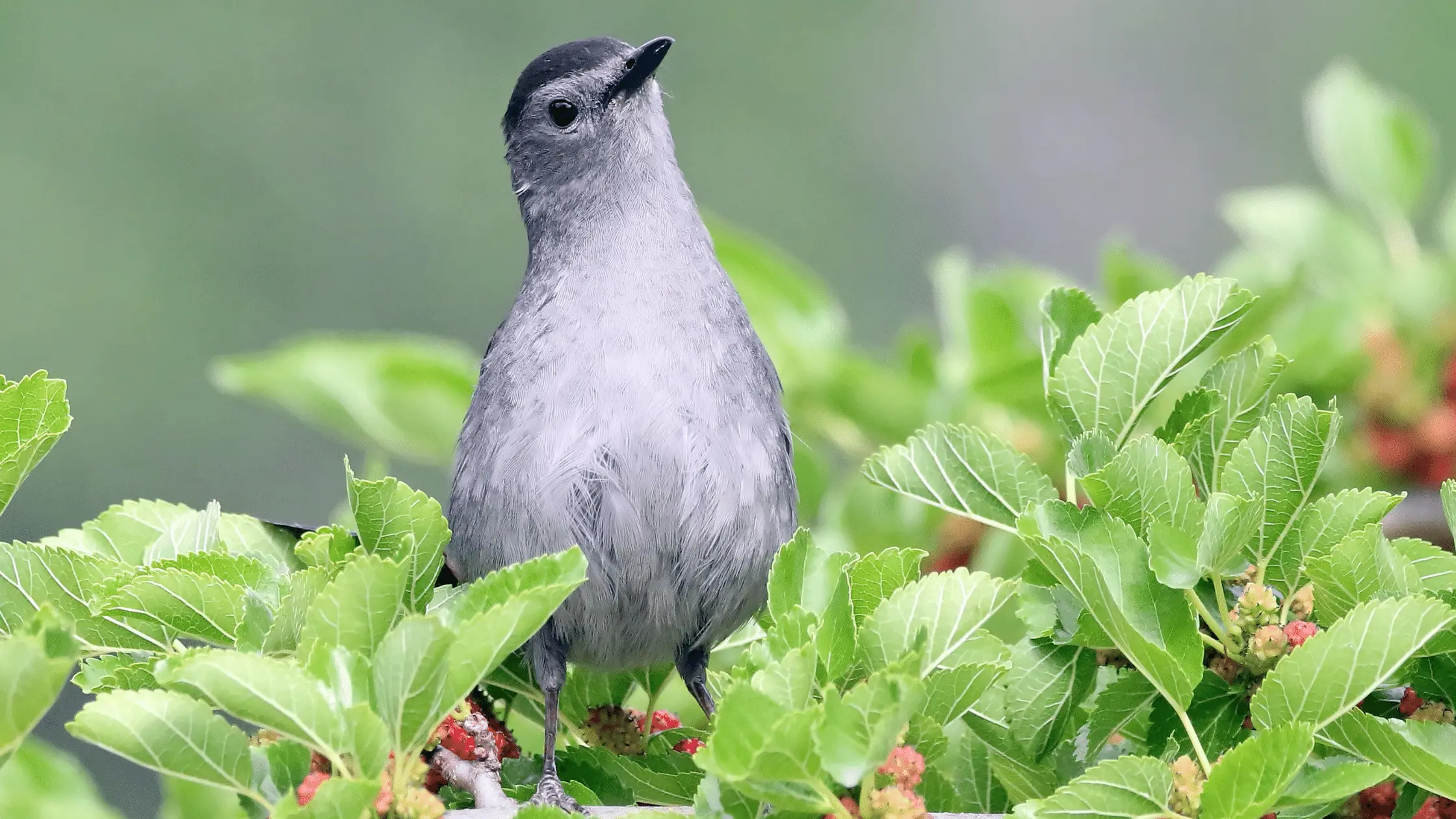
One of the most interesting things about a catbird is the sound it makes. Trust me, you can’t forget the sound of a catbird when you hear it.
Two catbirds belong to the Mimidae family of birds from the New World, four to the Ptilonorhynchidae family of bowerbirds, and one to the Timaliidae family of babblers from the Old World.
The gray catbird is very common in North America. However, they cannot be found in the far west of Canada and Northern Canada. Gray catbirds are very common and are the catbird species that most bird watchers will ever see. The catbird color is very bland and does not attract attention like the color of, say, a quetzal.
When the catbird sings, it will usually sing from the cover. However, when mockingbirds sing, they proudly perch from an exposed position. The note of a catbird call sounds like a short meow.
While the gray catbird mimics other birds and constantly makes sounds, unlike the Mockingbird and Thrasher, it does not often repeat itself. The general rule is that if a call is repeated three times in a row, it is being sung by a mockingbird; if it is repeated twice, it is being sung by a thrasher; and if each phrase is being sung only once, it is being sung by a catbird.
What is a Mockingbird?
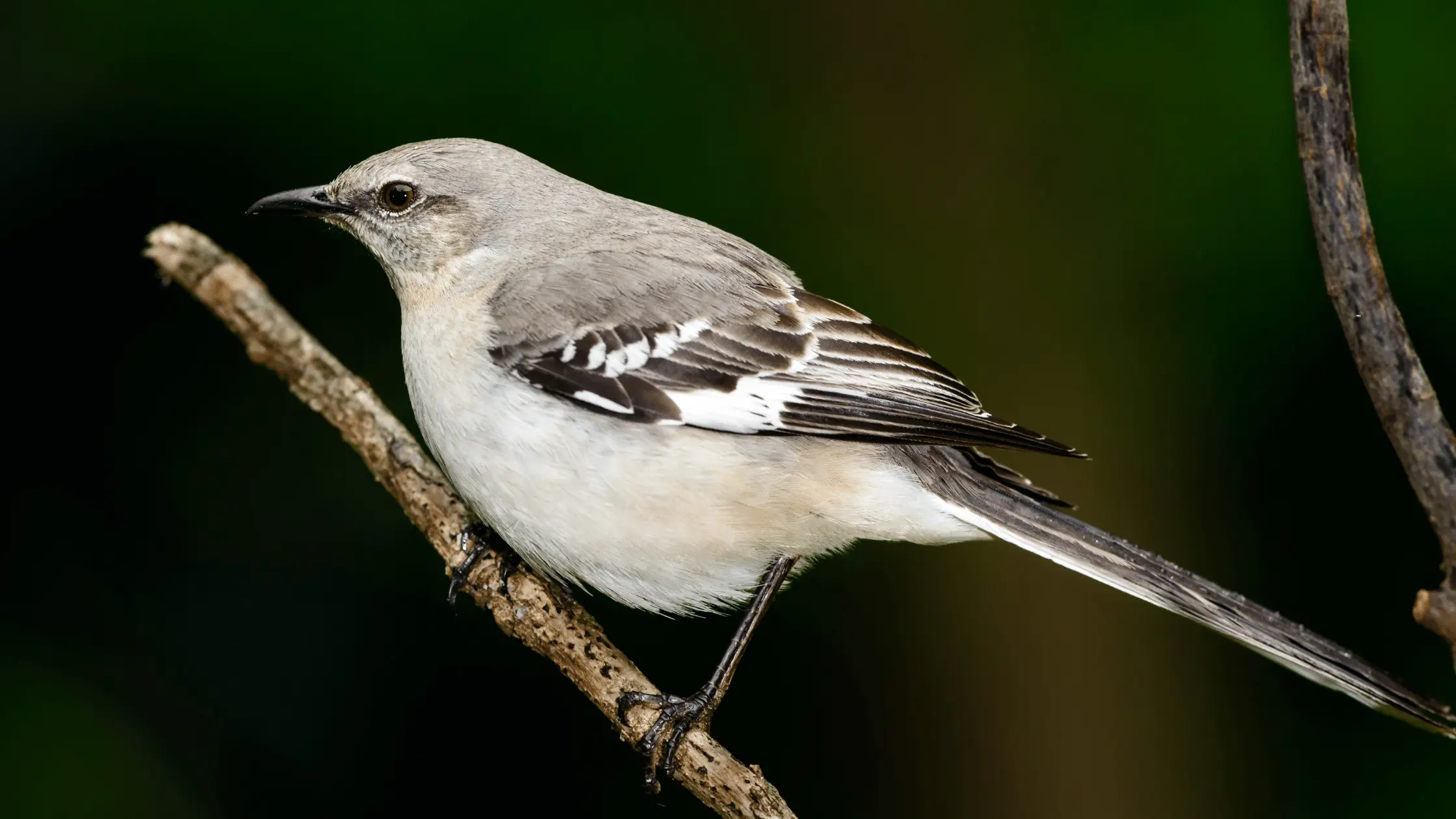
Mockingbirds belong to the family Mimidae. Mockingbirds get their name because they have a habit of mimicking other birds, insect sounds, and even amphibians. Their sounds are often loud and done in quick succession.
The mockingbird has about 17 species in two genera. In terms of size, the mockingbird is an average-sized bird. They measure about nine inches when measured from their head to tail. Mockingbirds weigh less than two ounces, and their bodies are very slender. The males of mockingbirds are more significant than the females, and they both have brown-gray feathers on their backs. They also have gray feathers on their bellies.
Don’t be alarmed when you see a mockingbird mimicking the sound of insects and other birds and inanimate objects such as sirens and squeaky doors. These birds are known to make up to 50 different call sounds, which is pretty awesome.
Catbird Vs. Mockingbird: Differences
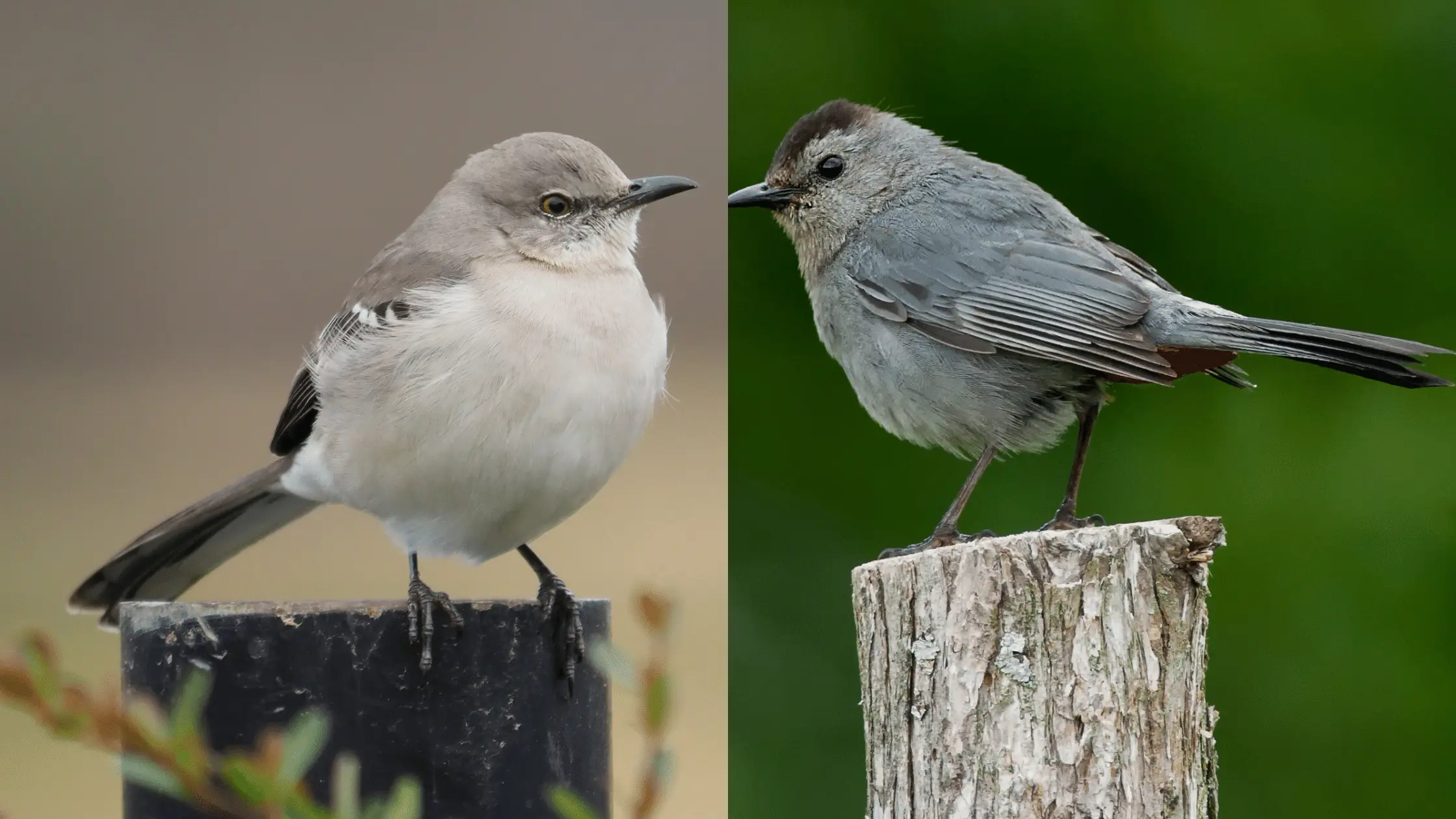
A mockingbird does look like a catbird, and the uncanny resemblance between those birds is the origin of the confusion surrounding them. However, there are physical differences between the catbird and the mockingbird if you can look closely. The following paragraph will go into more detail concerning the variances in these two songbirds.
Catbird Vs. Mockingbird: Differences In Color and Body Structure
As mentioned earlier, catbirds are primarily gray. You will also notice some grayish-brown patches on their tail undersides. The cap on the female catbird is gray, while the males spot a black cap. So, why do they have this rather bland and unexciting coloration? They use it to blend into the environment and hide from predators.
The feathers on catbirds are fluffy and medium-sized. They also have a pointed and straight black bill. The catbird has a shaggy look, no thanks to their fluffy and downy feathers.
On the other hand, a mockingbird’s upper parts are grayish brown. Their undersides are pale, and they have black and white wings. The outer parts of their tails are white and look very beautiful when the mockingbird takes flight.
If you have seen a robin, then you have an idea of the size of a mockingbird. The wings of the mockingbird are short. However, what the mockingbird lacks in the length of the feather, they make up for in the length of their legs. Also, the head of a mockingbird is small and round, and its bills are curved, long, and black.
Catbird Vs. Mockingbird: Difference In Size and Lifespan
The mockingbird measures about 21-26 cm from its head to the tail. They have a wingspan of 31-35 cm and weigh about 45-58 grams.
On the other hand, the catbird measures up to 21-24 cm when measured from the tip of its head to the tail. They have a 20-30 cm wingspan with a weight of 23.2-56.5 grams.
In terms of lifespan, the mockingbird and the catbird are similar. They both live for about 5-10 years. However, there is a clear difference between their lifespan in captivity. The catbird lives for 12 years in captivity, while the mockingbird lives up to 20 years. So, if you want to keep a bird pet that will live for a long time, you should go for a mockingbird.
Catbird Vs. Mockingbird: Differences In Diet and Migration
The catbird and the mockingbird love to eat berries and insects. They will also feed insects to their babies. During the summer, they will eat caterpillars, beetles, and crickets. They will switch their diet to berries and fruits when food becomes scarce in the fall.
Do mockingbirds and catbirds share migration patterns? A little bit. The mockingbird breeds in the Southern parts of Canada and the United States. When it is fall, they will begin to move South. The mockingbird will fly without stopping for three days.
The mockingbird will spend winter in the Southern United States, Central America, or Mexico. They will then return to the northern parts of the United States during the spring.
On the other hand, the catbird migrates to Canada and the Northern parts of the United States. They will spend their summer raising their babies in Canada and the United States. They will begin to migrate South in early September. They will fly over 2000 miles before they reach their winter homes in South America and Central America.
Catbird Vs. Mockingbird: Differences In Nesting, Range, and Habitat
The color of a catbird egg is greenish blue, and they lay one to six eggs in a clutch. On the other hand, a mockingbird lays about two to six eggs, and the color of the eggs is light blue, speckled with brown spots.
The cat and mockingbird will build their nests using the twigs they got from the leaves. A catbird builds a far more compact nest than its mockingbird counterpart.
In terms of range and habitat, the mockingbird is found in the Southern United States, Central America, and Mexico. The catbird likes to range in Southern Canada and the Eastern United States.
Catbirds like to migrate at night(maybe also cats?), and during the day, they perch on tree tops collecting insects for their babies. When winter comes around, the catbird will gather in a flock of 10-15 as they set to migrate.
Mockingbirds are at their most active when it’s daytime. When they are breeding, you may hear them singing at night. Mockingbirds are also intelligent little critters. Did you know that when they see a predator, they can mimic the sound of another bird, effectively throwing off the predator?
On the other hand, catbirds talk to each other by flapping their wings and head. They also use calls and songs as means of communication.

